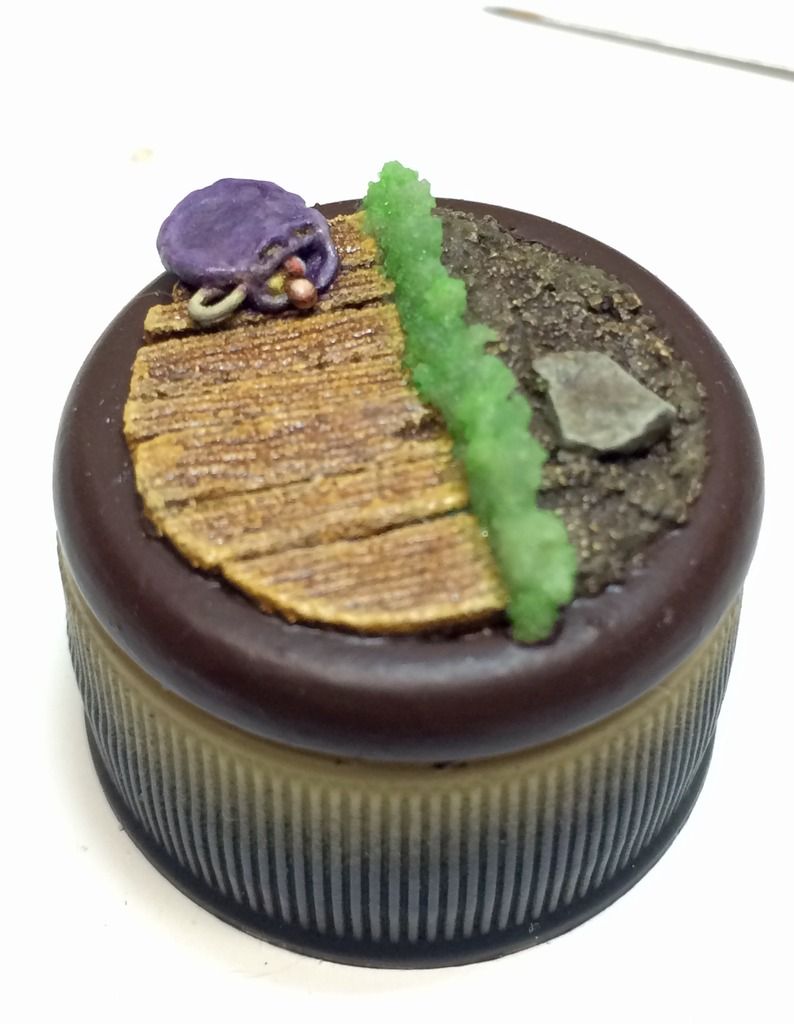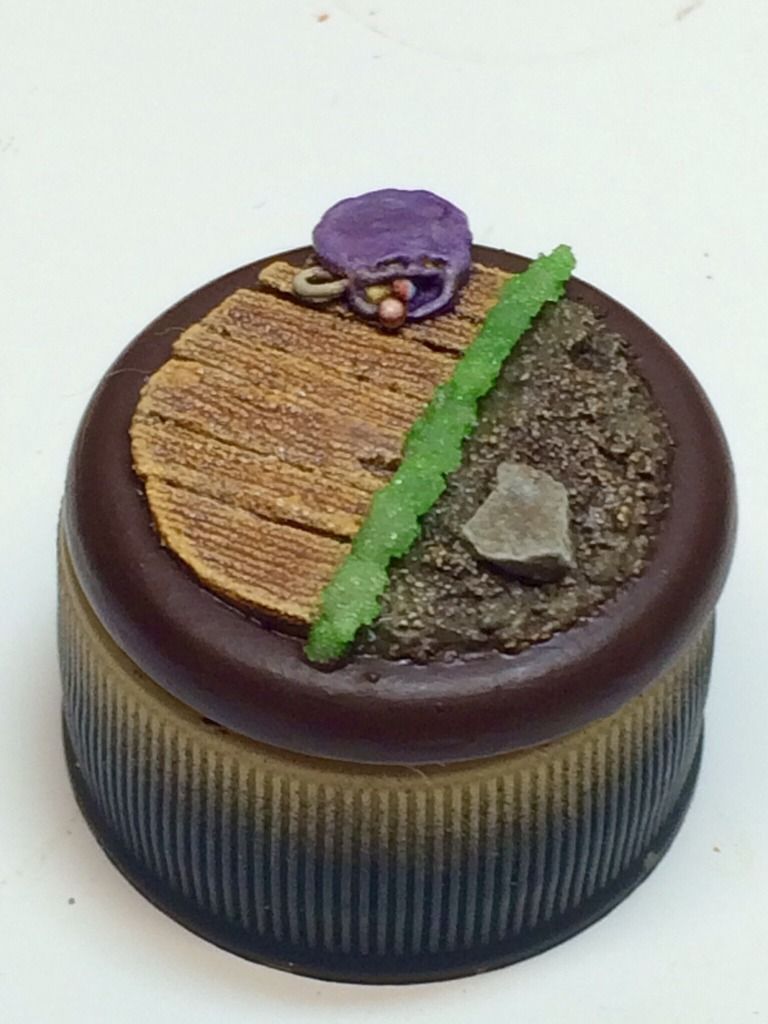Fortunately, there's a number of answers. With printed or copied graphics, you can transfer them onto a great number of mediums. For this particular section, however, I'm going to focus on the more frequently used output - water slide decals. Essentially, anything that you can make into a printable format you can theoretically make into a water slide decal - with some limitations, primarily being size.
As of my last attempt at creating decals, I've found four different types of water slide decal paper available and in a variety of sizes ranging from quarter sheet all the way up to full letter-size paper sheets. I went physically to places like hobby stores, craft/scrapbooking stores, and RC/scale modeling shops because I wanted to set eyes on the decal paper firsthand - but out of all the different sizes I found, I eventually settled on A5 size (5"x8") which I tried first and then Letter (8 1/2"x11") when I decided I wanted more decals with a different appearance. I'd imagine even more custom decal paper sizes might be available online, but I stuck with these two straightforward sizes of water slide transfer paper from both Testor's and Micro-Mark as they were pre-existing paper size settings in Word document and Adobe PDF format for creating sheets and I thought therefore would be easiest for printing at home or at a copy shop.
The different types of water slide decal paper are all essentially the same in form and function - a face-up sheet (possibly with an underlying layer of adhesive) over a layer of dextrose allowing for both adhesion and release from a colored backing sheet. For fine scale models/miniatures I'd recommend against using paper with the additional layer of adhesive as it makes for thicker decals and really isn't necessary if you use additional products like Micro-Mark's MicroSet and MicroSol (to be discussed later). The differences are simple - recommended printer type and sheet color. There are different papers for both inkjet or laser printers as well as clear decal sheets and white colored decal sheets. The A5 paper I tried first was clear and meant for inkjet printers - this was my first run with strictly black decals and a potentially maddening time cutting out all the little spikes from my original iconography design. I used Letter sized paper for laser printer (or copier!) in white for my second attempt with a filled-in design and this was much easier. The bottom line is that if you just want black lettering or something non-fancy, clear paper will show up just fine. If you want iconography or decals in any sort of color, I'd recommend using white decal paper to print to as the end result will show up much brighter over anything you apply a decal onto, regardless of how dark the surface is, even if that means you need to trim your decals more closely to avoid any white showing around the edges. Now there are very rare printers that print in white ink and cost thousands of dollars (ALPS printers) - barring those, the best you can do to get the color "white" in a decal is to use white decal paper and trim back to the edge of your design.
I'll admit - I personally didn't notice a significant difference in the output quality between the sheets I printed using my home inkjet printer onto inkjet water slide decal paper versus my second attempt with a different design printed out on a laser copy shop machine onto laser-variety water slide paper. Hypothetically, though, I'd have to imagine that the laser-variety output is a little more precise as there is no spreading of wet ink and the design is heat-bonded to the paper as a part of the printing process, but then the inkjet paper itself is designed to accomodate wet inkjet color and a slower drying time. The one thing I did notice, at least to start, was smearing - handling an inkjet decal sheet before it is fully dry is very messy, and I'd highly recommend only handling printed sheets by the edges whenever possible.
As near as I can tell, the sole difference between professionally-printed or store-bought water slide decals and those homemade is a permanent sealing layer over the top of the decal to prevent the design from dissolving or smearing during the application process. No problem!
From here on out, I'll be using the following picture to refer to in the way of tools to use:
After printing out your graphics onto a water slide decal sheet, it is simply a matter of sealing it once it has dried. I've seen reference to people using strong hold hairspray, but personally I've found a thorough spraying of gloss sealant (I used Krylon UV-Resistant Clear Gloss to prevent yellowing) to do the job of sealing the decal sheet excellent to prevent the printed graphics (both inkjet- and laser-printer-based) from smearing. In the case of my last set of printed decals, I used a second light coat of Krylon Matte Finish spray to tone down the glossiness. Once cut out from the decal sheet and applied to the model, I feel the matte surface helped the decal to blend in with the background a little better.
In researching water slide decals and how to apply them, it seems there are a lot of approaches. I'm going to describe mine - primarily to save other people reading the time and effort of looking elsewhere, but secondarily... because it works! To start with, I'd recommend trimming as close to the design on your intended decal as possible - this is especially necessary if you've printed on a white decal sheet as any white visible around the edges of your design will look awkward or possibly need to be painted over.
Recommended materials:
- A shallow dish or saucer with room-temperature distilled water
- A pair of tweezers and/or sharp hobby knife
- Brush-on gloss acrylic/Future Floor Finish/etc.
- MicroSet and MicroSol
So to apply homemade decals, what I do is the following:
- Brush on gloss acrylic medium/Future Floor Finish/something similar in the area where you want to apply your decal. This will smooth out the surface, allowing for easy transfer and minimizing the likelihood of bubbles beneath your decal. Allow to dry.
- Neatly cut out your decal - as mentioned before, when printing on white water slide decal paper you want to cut as close to your design as possible to avoid stray white space around the edges. For clear paper the less overhang you've got, the less chance for bubbles or wrinkles forming at the edges and the better your decal will conform to curved or uneven shapes.
- Allow the cut-out decal to soak in a very shallow saucer (even a small plate will do - the shallowed the water, the easier to wrangle wayward decals) for about 10 seconds or until it starts to slide easily on the backing material - take care not to let the decal slip off the backing material entirely!
- Brush on a quick coating of MicroSet in the area you want the decal to sit on your figure or model - this prepares the area and allows for better decal adherence.
- Pick up the backing material with decal on it (tweezers make this infinitely easier) and align an edge of the decal and the backing with where you want the final location to be.
- Gently and carefully slide the decal off the edge of the backing on your model, holding the edge where you want the decal to sit with the point of a hobby knife or toothpick while carefully sliding the backing out from underneath - one needs to be very careful at this stage, because any quick motions can cause the decal to tear or move out of alignment.
- Before all the water dries or is absorbed by the decal, quickly (but carefully) slide your decal to its final placement location.
- Apply a thin brush-on coat of MicroSol over your decal - this aids with adherence because it softens the decal somewhat. Perfect if you're trying to get it to conform to panel lines, curved shapes, rivets beneath and the like.
- If there are any small air bubbles trapped beneath your decal, you can use the point of a hobby knife or scalpel to piece the decal and release the trapped air - just be careful not to cut or move your decal, otherwise it may tear.
- Once fully dry, you may want to brush a little more gloss acrylic medium/Future Floor Finish/something similar around the edge of the decal and the surface its adhered on, depending on the thickness of your water slide decal - if you need to blend the edges into the background surface a little more smoothly.







